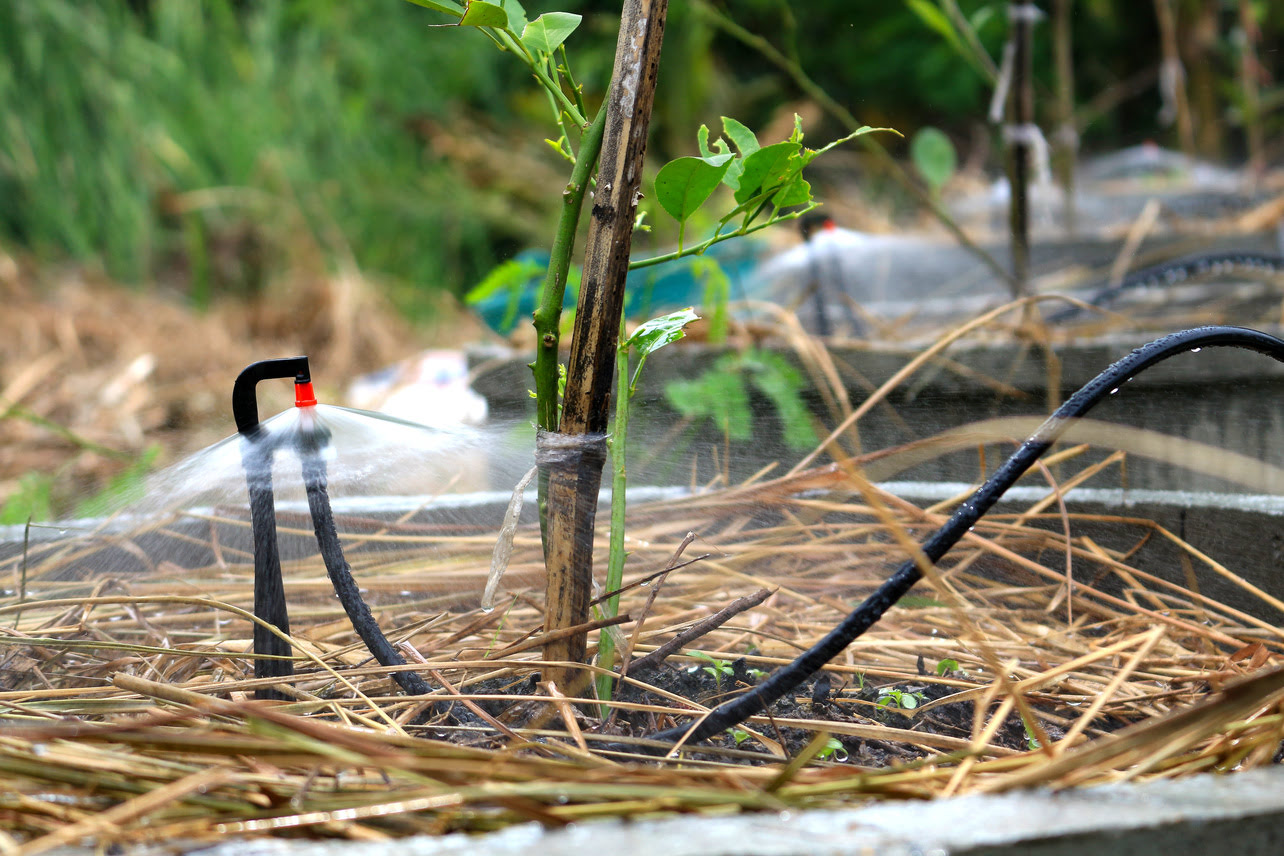Home>Gardening News and Trends>Latest News>Which Society Constructed Terraces To Reduce Soil Erosion And Allow Irrigation Canals To Flow?


Latest News
Which Society Constructed Terraces To Reduce Soil Erosion And Allow Irrigation Canals To Flow?
Modified: February 8, 2024
Discover the latest news on the society that constructed terraces to reduce soil erosion and facilitate the flow of irrigation canals.
(Many of the links in this article redirect to a specific reviewed product. Your purchase of these products through affiliate links helps to generate commission for Chicagolandgardening.com, at no extra cost. Learn more)
Table of Contents
Introduction
Terraces have long been used as a sustainable land management technique to address the challenges of soil erosion and facilitate the flow of irrigation canals. These ancient structures, created by societies throughout history, have played a crucial role in preserving arable land and maximizing agricultural productivity.
By constructing terraces, societies have been able to transform steep, sloping terrain into a series of flat, level platforms. Each terrace acts as a retaining wall, holding back soil and preventing it from being washed away by rainwater. This not only prevents soil erosion but also provides a stable foundation for agricultural activities, such as planting crops and constructing irrigation systems.
Moreover, terraces enable the efficient distribution of water by creating a controlled flow path. They allow irrigation canals to meander along the contours of the land, reaching every terrace level. This ensures that water reaches all areas of the cultivated land, promoting healthy plant growth and maximizing crop yields.
Throughout history, various societies have recognized the benefits of constructing terraces and implemented this technique in their agricultural practices. They appreciated the importance of preserving soil fertility, preventing erosion, and optimizing water management. By harnessing the power of terraces, these societies were able to sustain their agricultural systems and support growing populations.
In this article, we will explore the construction of terraces and their role in reducing soil erosion and allowing irrigation canals to flow. We will dive into the historical background, examine the technique of terrace construction, discuss its benefits, and explore examples of societies that have utilized terraces to achieve agricultural success. Let’s embark on a journey through time and discover the ingenuity and wisdom behind the creation of these remarkable structures.
Historical Background
The use of terraces in agricultural practices dates back to ancient civilizations, where societies recognized the need to mitigate the challenges posed by hilly or mountainous landscapes. The creation of terraces was a response to the pressing issues of soil erosion and water management.
One of the earliest examples of terrace construction can be traced back to ancient Mesopotamia, in present-day Iraq. The Sumerians, who inhabited this region around 6000 BCE, developed intricate irrigation systems and terraced fields to cultivate crops along the floodplains of the Tigris and Euphrates rivers. These terraces served as barriers against soil erosion caused by the annual flooding of the rivers, and allowed for optimal water distribution to the crops.
In Asia, the ancient Chinese civilizations also recognized the importance of terraces. They implemented a technique known as “rice paddy terracing” in the hilly regions of southern China. This technique involved creating stepped terraces that followed the contours of the land, ensuring that water flowed evenly and irrigated the rice fields adequately. The building of these terraces not only prevented soil erosion but also enabled the growth of rice in regions with challenging topography, thus increasing food production and supporting a growing population.
In the Andean region of South America, the Incas developed an impressive system of terraces, known as “andenes,” on the slopes of the mountains. These terraces not only prevented soil erosion caused by heavy rainfall but also allowed the cultivation of a variety of crops, such as potatoes, quinoa, and maize. The Incas mastered the art of constructing terraces by carefully aligning the walls with the natural contours of the land, enabling efficient water distribution and creating microclimates that facilitated the growth of diverse crops.
These are just a few examples of the historical background of terrace construction. Over the centuries, numerous societies around the world have employed terrace building techniques to address the challenges of soil erosion and water management. The development of these techniques showcases the ingenuity and adaptability of ancient civilizations, as they successfully harnessed the power of terraces to maximize agricultural productivity.
Construction of Terraces
The construction of terraces involves carefully shaping the natural landscape to create level platforms, often with retaining walls to prevent soil erosion and facilitate efficient water distribution. The process varies depending on the characteristics of the terrain and the resources available to the society constructing the terraces.
One common method is the creation of stepped terraces, where each level is constructed on a sturdy foundation and supported by retaining walls made of stone, wood, or other materials. The walls are built along the edges of the terrace to hold the soil in place, preventing it from being washed away by rainfall or runoff. The width and height of the retaining walls are designed to withstand the surrounding environmental conditions and the weight of the soil and crops.
The construction of terraces often requires extensive manual labor and the use of basic tools such as shovels, hoes, and picks. Workers carefully shape the land, removing excess soil from higher levels to be used in building lower levels. The alignment of the terraces follows the natural contours of the land, ensuring that the water flows smoothly and evenly between each level.
In some cases, societies have utilized innovative engineering techniques to optimize the construction of terraces. For example, the Inca civilization in South America used a system called “agricultural terracing.” This involved cutting into the mountainside to create flat, terraced platforms known as andenes. The Inca engineers carefully calculated the angles and slopes to maximize water distribution and sunlight exposure, resulting in highly productive agricultural lands.
When constructing terraces, societies also had to consider the long-term maintenance and sustainability of the structures. Regular maintenance, such as repairing retaining walls and ensuring proper water flow, was crucial to prevent erosion and maintain the productivity of the terraced fields. Some societies implemented systems of collective labor, where community members would come together to maintain the terraces and address any issues that may arise.
The construction of terraces required careful planning, extensive labor, and a deep understanding of the local geography and climate. Each society adapted their techniques to suit their specific circumstances, resulting in unique terrace designs that efficiently managed soil erosion and water resources.
Role in Reducing Soil Erosion
Terraces play a vital role in reducing soil erosion, which is a major challenge in agricultural areas with steep or hilly terrain. By creating flat, level platforms with retaining walls, terraces effectively prevent soil from being washed away by rainfall or runoff, preserving the integrity and fertility of the land.
One of the primary causes of soil erosion is the force of water flowing down slopes, carrying sediments with it. Terraces act as barriers, intercepting the flow of water and preventing it from gaining enough momentum to wash away soil particles. The retaining walls of the terraces hold the soil firmly in place, ensuring its stability and preventing erosion.
The stepped structure of terraces also helps to slow down the movement of water. As rainwater flows down the slope, it is intercepted at each level of the terrace, giving it time to percolate into the soil and be absorbed by plants. This not only reduces the force of the water but also allows for better infiltration and drainage, further minimizing erosion.
Terraces also provide additional protection against erosion by creating a series of smaller, manageable spaces for cultivation. Instead of planting crops across a large, sloping area, terraces divide the land into smaller sections, reducing the risk of exposing large surface areas to erosion. This compartmentalization helps to concentrate water and nutrients within each terrace, promoting healthy plant growth and minimizing erosion on a smaller scale.
The retaining walls of terraces also play a critical role in preventing downslope movement of soil. By holding the soil in place, these walls act as barriers against gravity-induced erosion. They provide stability to the terraced slopes, preventing the soil from slumping or sliding downhill.
Furthermore, terraces can assist in the accumulation of organic matter and sedimentation, promoting soil development and enhancing its fertility. As water slows down on each terrace level, it deposits sediments and organic matter carried from higher levels. This process contributes to the gradual buildup of nutrient-rich soil, creating a favorable environment for crop growth and reducing erosion by enhancing soil stability.
Overall, the construction of terraces significantly reduces soil erosion by intercepting water flow, slowing down its movement, and creating smaller, more manageable cultivation spaces. By implementing terracing techniques, societies have been able to protect their arable lands, preserve soil fertility, and sustain agricultural productivity in challenging landscapes.
Role in Allowing Irrigation Canals to Flow
Terraces play a crucial role in facilitating the flow of irrigation canals, ensuring efficient water distribution across agricultural lands. By creating level platforms along the contour lines of the terrain, terraces provide a controlled path for irrigation water to reach every level of the cultivated land.
One of the main challenges in irrigating sloping or hilly terrain is the uneven distribution of water. Without terraces, water tends to flow rapidly down the slope, resulting in uneven irrigation and potential water wastage. However, when terraces are constructed, irrigation canals can be designed to follow the contour lines of each terrace level, allowing water to flow in a controlled manner across the entire area.
By channeling water along the terraced fields, irrigation canals are able to provide water to crops at each terrace level, ensuring that all plants receive an adequate amount of water for optimal growth. This eliminates the problem of over-irrigation in some areas and under-irrigation in others, leading to more efficient water usage and maximizing crop yields.
The stepped structure of terraces also assists in preventing water runoff and allowing water to infiltrate the soil. As water flows down the slope, it is intercepted at each terrace level, providing an opportunity for it to percolate into the soil and be absorbed by plants. This promotes better water retention within the soil, reducing the need for excessive irrigation and conserving water resources.
Additionally, terraces help to prevent the loss of irrigation water through natural drainage. By providing flat, level surfaces, terraces allow water to evenly spread and infiltrate the soil, preventing excess water from running off too quickly. This is particularly important in areas with sandy or loamy soils that may have high permeability, as terraces provide a more controlled environment for water to penetrate deep into the soil profile.
Terraces also aid in the prevention of waterlogging and soil saturation. The leveled platforms of terraces allow excess irrigation water to drain away, maintaining a healthy moisture balance in the soil and avoiding waterlogging, which can be detrimental to crop growth. The proper drainage facilitated by terraces ensures that the crops receive the necessary amount of water without being subjected to water stress or excessive saturation.
In summary, terraces play a vital role in allowing irrigation canals to flow smoothly and evenly distribute water across agricultural lands. By following the contours of each terrace level, irrigation water is effectively channeled to provide optimal hydration for crops. The leveled platforms and controlled flow provided by terraces ensure efficient water usage, prevent water runoff, and assist in maintaining a balanced soil moisture level.
Examples of Societies that Constructed Terraces
Throughout history, numerous societies around the world have recognized the benefits of constructing terraces and successfully implemented this technique to enhance their agricultural practices. Let’s explore some notable examples:
- The Sumerians: The ancient Sumerians, who inhabited Mesopotamia around 6000 BCE, built terraces along the floodplains of the Tigris and Euphrates rivers. These terraces helped to mitigate soil erosion caused by annual flooding and facilitated irrigation. They constructed canals to divert water onto the terraced fields, allowing crops such as barley and wheat to flourish.
- The Incas: The Inca civilization, which thrived in the Andean region of South America from the 13th to the 16th century, created impressive terraces known as “andenes.” With careful engineering, the Incas built terraces on steep mountainsides, maximizing arable land and promoting efficient water distribution. The terraces supported the cultivation of various crops, including potatoes, quinoa, maize, and medicinal plants.
- The Chinese: Ancient Chinese societies developed extensive terracing systems to cultivate crops in hilly regions. One remarkable example is the Longji Rice Terraces in Guangxi province, China. The terraces, built over several centuries, follow the natural contours of the land and create stunning landscapes. They allow for rice cultivation in mountainous areas, enhancing food production and providing valuable insight into sustainable farming practices.
- The Ifugao: The Ifugao people of the Philippines are known for their intricate rice terraces, recognized as a UNESCO World Heritage Site. These terraces, known as the Ifugao Rice Terraces, date back over 2,000 years and demonstrate the sustainable agricultural practices of the indigenous communities. The terraces are carved into the rugged mountainsides and have been continuously maintained and improved over generations.
- The Aztecs: The Aztecs, an ancient civilization in Mesoamerica, constructed chinampas, which were floating gardens built on the shallow lakes of the Valley of Mexico. Although not traditional terraces in the conventional sense, the chinampas were raised platforms made from layers of mud, plants, and organic matter. They provided fertile land for cultivation, enabling the Aztecs to grow a wide range of crops.
These examples highlight the diversity of societies that have embraced terrace construction to overcome the challenges posed by terrain and to improve agricultural productivity. From the fertile plains of Mesopotamia to the steep mountainsides of the Andes, these societies developed sophisticated techniques to create terraces that sustained their civilizations for centuries.
Conclusion
The construction of terraces has played a significant role in various societies throughout history, addressing the challenges of soil erosion and facilitating efficient water distribution. From ancient civilizations such as the Sumerians, Incas, and Chinese, to indigenous communities like the Ifugao and Aztecs, societies recognized the importance of terrace construction in sustaining their agricultural practices.
Terraces have proven to be effective in reducing soil erosion by preventing the loss of soil particles due to water runoff. The stepped structure of terraces and the use of retaining walls help to slow down water flow, allowing it to percolate into the soil and be absorbed by plants. Terraces also create smaller, manageable cultivation spaces, minimizing erosion and preserving soil fertility.
Furthermore, terraces facilitate the flow of irrigation canals, ensuring even water distribution across the entire cultivated area. By following the contour lines of the land, irrigation canals reach each terrace level, providing water to crops in a controlled manner. This prevents over-irrigation and under-irrigation, optimizing water usage and maximizing crop yields.
Examples from history, such as the terraces of the Sumerians in Mesopotamia, the Incas in the Andes, and the rice terraces of the Ifugao in the Philippines, demonstrate the ingenuity and adaptability of societies in implementing terrace construction. By harnessing the power of terraces, these societies transformed challenging landscapes into productive agricultural areas, with sustainable practices that were passed down through generations.
In conclusion, terraces have proven to be a timeless and effective solution for reducing soil erosion and optimizing water management in agricultural practices. The construction of terraces not only preserves the integrity of the land but also enhances agricultural productivity and sustains communities for generations to come. The wisdom and knowledge behind terrace construction continue to inspire us to care for our environment and employ sustainable agricultural practices.







